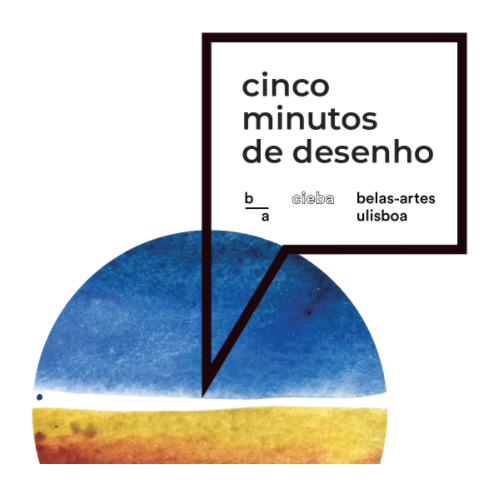A dark wood grew inside me
Drawing has always been the most immediate and accessible form of communication for me. I’m interested in how drawing can depict both tangible and intangible things, how images can document events or represent memories, and how marks and materials in themselves have meaning and feeling. I’m not interested in representing things exactly as they appear, but rather the construction of an image that is part real, part invented, and maybe part lies, yet through the combination of all of these aspects is more authentically a representation of the truth.
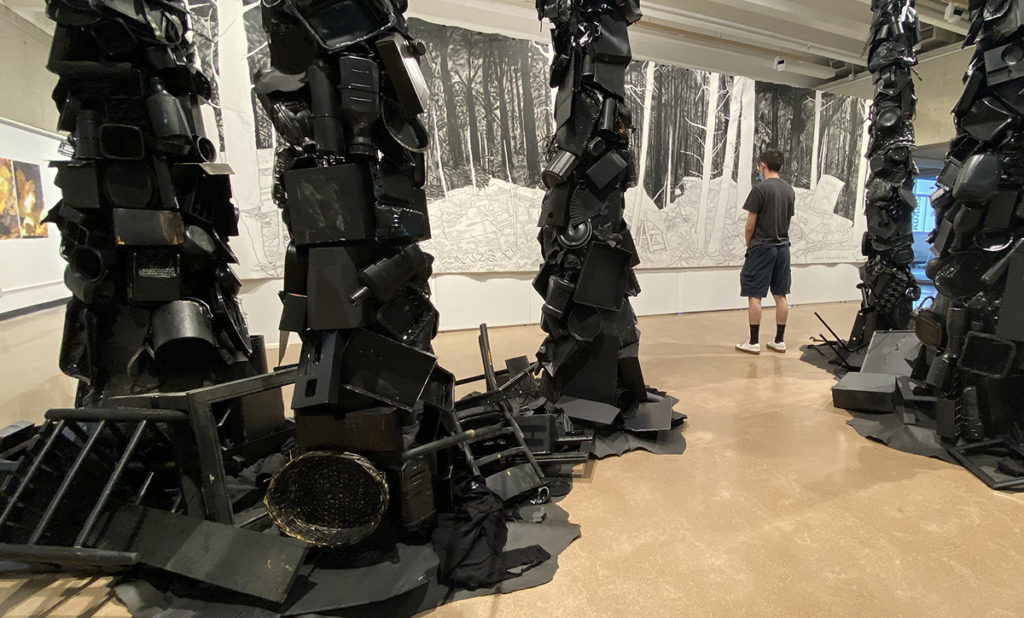
Much of my work has been focused on the documentation of both natural and man-made disasters, primarily representing the aftermath of such events including piles of rubble and detritus strewn across the landscape. When I was 15 my childhood home had been burned to the ground leaving only charred black remnants of my family’s tangible assets. That memory was seared into my mind, has permeated my creative work, and more recently has taken on new meaning in the context of the climate crisis.
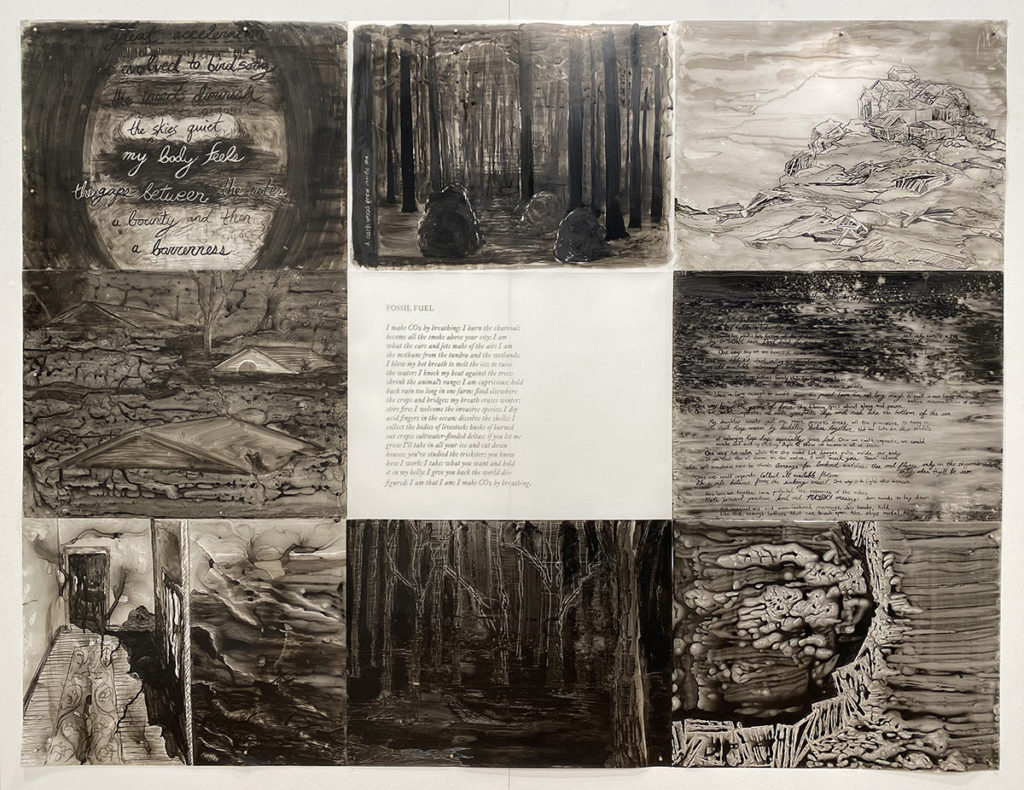
In 2019 I began a collaboration with poet Sasha West. West’s poems question our culture’s belief in limitless growth. Collapsing time, her speakers range across eras and historical events to try and articulate their role as witnesses in the first generation to feel palpably the effects of climate change (mere decades after global warming was first named). Reading and responding to her manuscript, Solastalgia, I began to make a new series of automatic drawings. These drawings reflect the melancholy and darkness manifest in West’s poems.
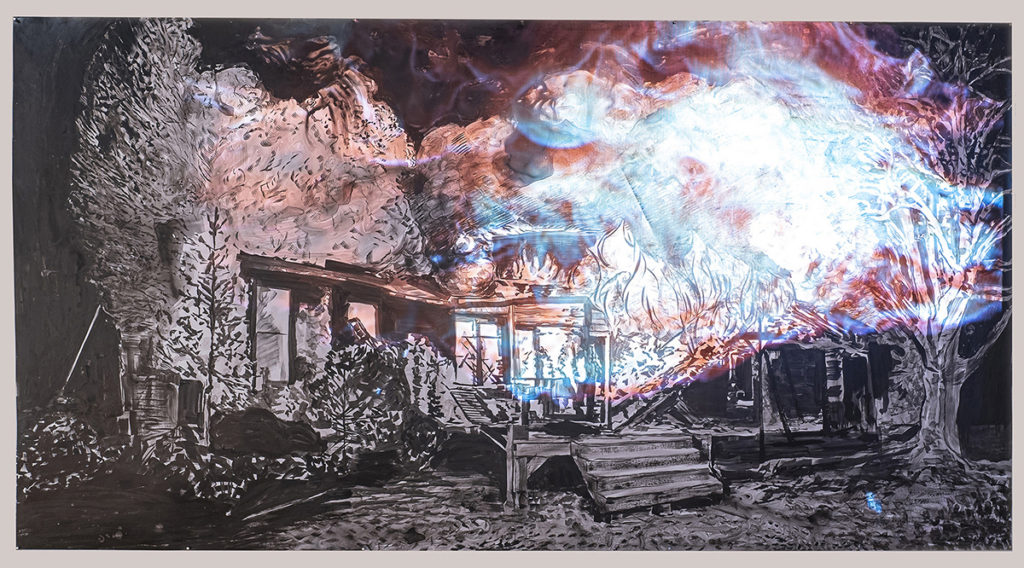
For my 5 minutes of drawing I wanted to provide a glimpse into this collaboration by sharing a sound recording of Sasha West reading one of her poems, “Ode to Fossil Fuel,” alongside documentation of the making of an automatic drawing.
Mirroring the intensity of her words, I wanted to capture the almost frantic process of marking, coating, scratching, scrubbing and washing, revealing an image that reflects my own anxiety around the current state of the environment. Beyond the recognizable imagery I’m interested in how the mark or material can form meaning, from the resist created by the line drawing (an imprint of history), to the the blackness and opacity of the ink (like an oil slick coating the landscape), to the impermanence revealed through the scratching and scrubbing off of the pigment (alluding to the fragility of the environment).
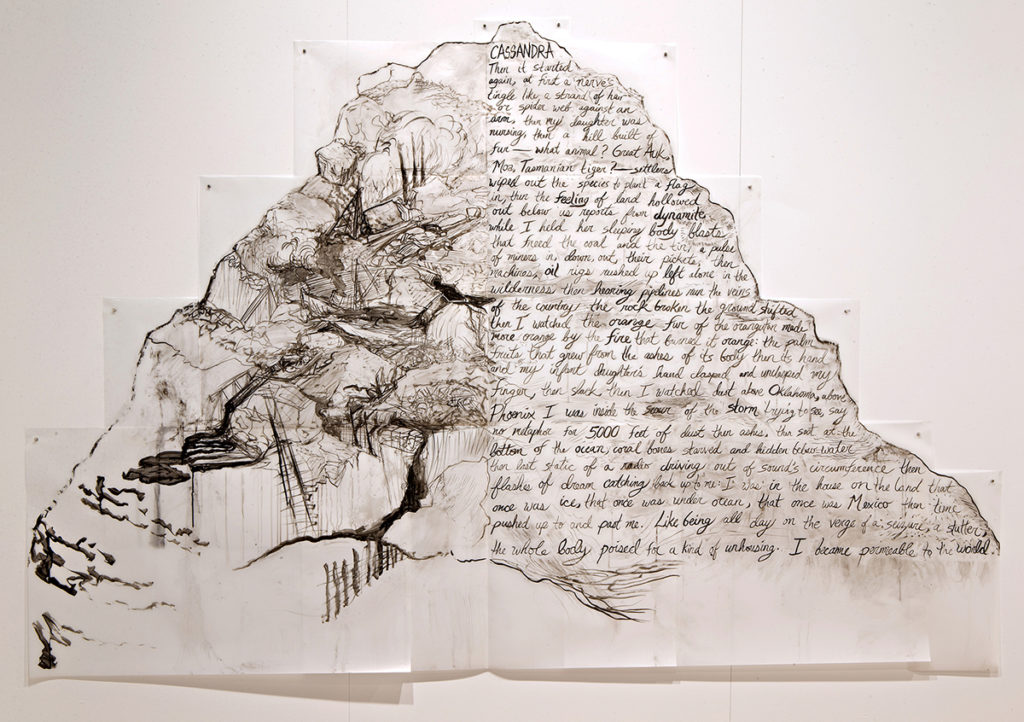
For me, drawing is immediate, transformative, and honest. It is an excellent medium for discovering one’s own language and truth.
Hollis Hammonds is a multimedia artist whose work, built on memory and utilizing evidence from the public collective consciousness, investigates social issues ranging from economic disparity and state violence to environmental degradation and man-made disasters. Hammonds work has been exhibited widely, she is the author of Drawing Structure: Conceptual and Observational Techniques, and has had her creative work featured in numerous publications. She is a Professor of Art and Chair of the Department of Visual Studies at St. Edward’s University in Austin, TX.
